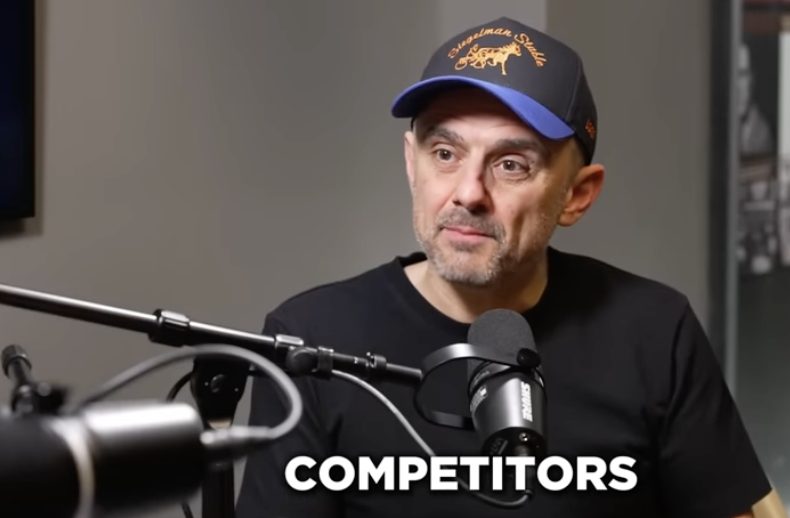“I watched it happen again last week. A small skincare brand with barely 5,000 followers had one TikTok video go viral, generating more sales in 48 hours than their corporate competitor did with a million-dollar TV campaign,” GaryVee said. This isn’t an anomaly anymore—it’s the new reality of business.The marketing landscape has fundamentally changed, yet most corporate executives remain emotionally attached to outdated strategies. As someone who analyzes marketing trends daily, He has observed a dramatic power shift that’s leveling the playing field between David and Goliath brands.
The End of Traditional Barriers to Entry
Just fifteen years ago, small entrepreneurs faced nearly impossible barriers. Without millions in capital, you couldn’t:
- Secure shelf space at major retailers like Walmart, Sephora, or CVS
- Afford television advertising to reach mass audiences
- Build distribution networks to compete with established players
That world is gone. The barriers have collapsed thanks to two major shifts: attention has moved to mobile devices and social networks, while distribution has transformed through Amazon, 3PLs, and Shopify.
You no longer need Walmart to build a $100 million business. This is unprecedented in consumer goods history. The same transformation is happening across every industry—just look at how Canva disrupted Adobe without the traditional trade show booths and corporate client courting.
Why Corporate America Resists Change
When he consults with CMOs at major companies about TikTok live shopping or influencer marketing, he often faces resistance. Not because they don’t intellectually understand what’s happening, but because they’re emotionally tied to their current business model.
Imagine being a retailer with 400 store leases, fixtures, and employees. When he suggests that a studio setup could generate comparable sales to your flagship store—without the overhead—it creates cognitive dissonance. You’ve made financial commitments that will be judged quarterly.
Similarly, if you’ve just signed Tiger Woods to a $60 million endorsement deal, hearing that online creators could deliver better results for a fraction of the cost doesn’t sit well.
This explains why his book is dedicated “to the 1% that make consumer-centric decisions versus the 99% that make decisions based on boardroom politics.” Most entrepreneurs must be consumer-centric or quickly go out of business. It’s executives at established companies who struggle most with this shift.
Day Trading Attention: The New Marketing Reality
Traditional marketing moved at a glacial pace. Brands would spend months planning campaigns, developing creative, shooting commercials, and finally launching—often 9+ months after starting the process.
This approach is now dinosaur behavior. The market moves too quickly for that timeline.
What works today is what I call “day trading attention”—creating multiple pieces of content daily across platforms, analyzing performance in real-time, and quickly pivoting based on data. Every Fortune 5000 company should be posting multiple pieces of content across social networks daily, watching the organic algorithms deliver results, and using that data to inform their next moves.
For 70 years, media dollars hid bad creative. Now, media dollars should amplify good creative that already proves it resonates organically.
The Platform Imperative
Understanding social networks is no longer optional—it’s as fundamental as understanding how to balance your checkbook. Any business not excelling at social is vulnerable to decline.
When you combine YouTube, Twitter, Facebook, Instagram, TikTok, Snapchat, LinkedIn, plus streaming services like Netflix and Hulu, you’ve captured most consumer attention. Traditional channels are diminishing rapidly:
- Network television viewership continues to plummet
- Print publications get thinner while prices increase
- Outdoor advertising loses impact as everyone stares at phones
This isn’t catastrophic—it’s simply change. Markets evolve. But whether you’re B2B (LinkedIn) or B2C (the rest), if your business isn’t strong on social, every quarter will get worse.
Building for the Future: The IP Opportunity
With AI’s rapid advancement, intellectual property may become one of the safest business models. This is why I’ve invested heavily in creating my own IP through VeeFriends—characters designed to teach values while building community.
His partnership with Topps for trading cards places my characters alongside Disney, Star Wars, and Marvel properties. This isn’t just nostalgia; it’s a strategic move to reach audiences through multiple touchpoints—from YouTube Kids to Harper Collins books to physical collectibles.
The goal isn’t just commercial success but creating characters that can reach people in ways my personal brand cannot. While not everyone connects with “Gary Vee,” characters like Patient Panda and Empathy Elephant can transcend those limitations.
For entrepreneurs watching this shift, the message is clear: the playing field has never been more level. The customer remains undefeated, and those who make truly consumer-centric decisions—rather than clinging to outdated models—will win in this new landscape.







